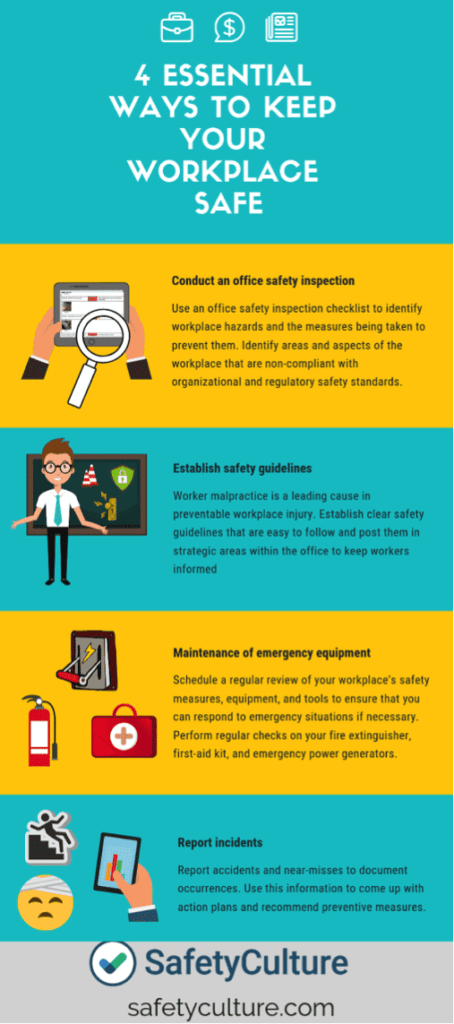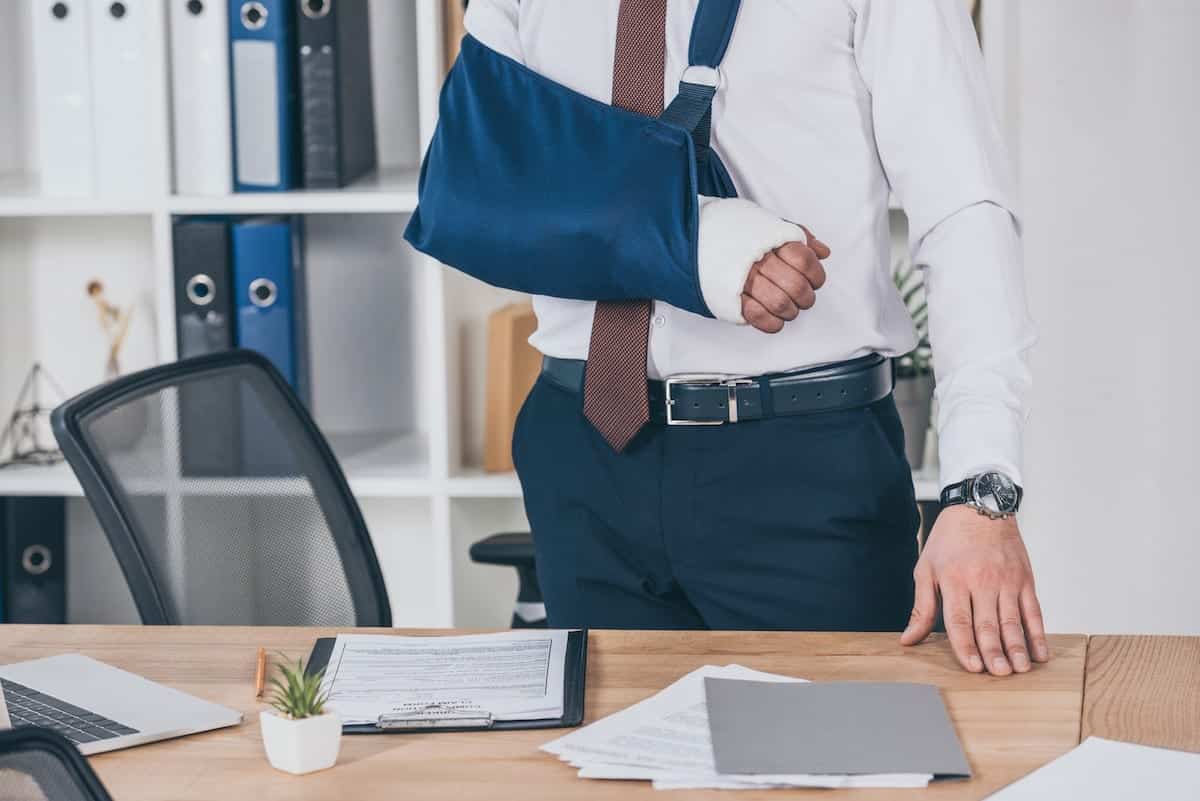By Juhlian Pimping
Workplace hazards are often taken for granted in the workplace. Since office workers usually spend all day working at their desks, no one expects anyone to get injured, until they do. This negatively affects both the worker and the overall productivity of the organization.
Statistics show that millions of workers are actually injured inside their offices every year, with slip, trip, and fall hazards being the most common cause of injury.
It’s an employer’s responsibility to keep workers safe, which is why it’s important that they make an effort to provide a hazard-free environment.
Here are 4 essential ways to keep your workplace safe.

1. Conduct an Office Safety Inspection
Start with using an office safety inspection checklist to identify workplace hazards and the measures currently being taken to prevent them. Identify areas and aspects of the workplace that are not compliant with organizational and regulatory workplace safety standards.
An effective office safety inspection should be thorough, but simple. Look out for environmental elements such as excessive noise, uneven temperature, and proper ventilation. Check equipment and materials to ensure that they’re in good condition and are unlikely to cause injury. Observe if proper training was implemented and evaluate employees if they comply with regulatory safety standards and protocols.
Using the information you’ve gathered, come up with an action plan to reduce the likelihood of workplace injuries.
2. Establish Safety Guidelines
Aside from environmental elements, worker malpractice is another cause of preventable workplace injury. Establish clear safety guidelines that are easy to follow and post them in strategic areas within the office to keep workers informed. Here are some examples of safety guidelines:
- Do not stack office supplies on the walkways
- Always close doors after entering or leaving a room
- Use the handrails when going up or down the stairs
- Carry and store sharp objects with the tip pointing down
- Use appropriate tools and equipment
- Do not plug multiple cords into a single electrical outlet
- Use proper signage in case of machine maintenance
- Clean spilled items immediately
- Keep emergency exits accessible and unobstructed
- Ensure ergonomic workstations for employees
- Stand up and stretch for a few minutes for every hour spent on your workstation
3. Perform Regular Maintenance of Emergency Equipment
Schedule a regular review of your workplace’s safety measures, equipment, and tools to ensure that you can respond to emergency situations if necessary.
Perform monthly fire extinguisher inspections and check the pressure gauge to ensure that it’s at optimal levels. Conduct regular tests of sprinklers, fire alarms, and emergency lights to ensure its working condition. Check your office’s first-aid kit on a weekly basis and ensure that you always have an adequate supply of items such as gauze pads, roller bandages, adhesive tape, and hydrogen peroxide. Periodically inspect the office’s emergency generator to ensure alternative power supply is available in case of a power interruption or calamity.
4. Report Incidents Immediately
The implementation of accident and near-miss reporting should be standard practice for both office and field workers:
- Accident Reports are usually completed by supervisors to document the occurrence and cause of an injury. It includes details such as the injured person’s name, the nature and severity of the injury, factors that contributed to its occurrence, and recommended preventive measures.
- Near-miss Reports are used to document potential hazards based on instances that almost resulted in actual injury. This helps you identify the cause of the near miss so preventive measures can be taken to prevent it.
Incident reports give valuable insight into what can actually go wrong at work, helping you decide on the correct preventive measures to take. It helps to eliminate recurrence of incidents and severe property damage. It is also beneficial to support further investigation in case of filing an insurance claim.
Keeping the workplace safe is an important factor of business success. Employees in a safe environment have higher morale and are more productive. More importantly, employees become more efficient since they can focus completely on their tasks knowing their safety is assured by the organization.
Featured photo credit: Depositphotos

